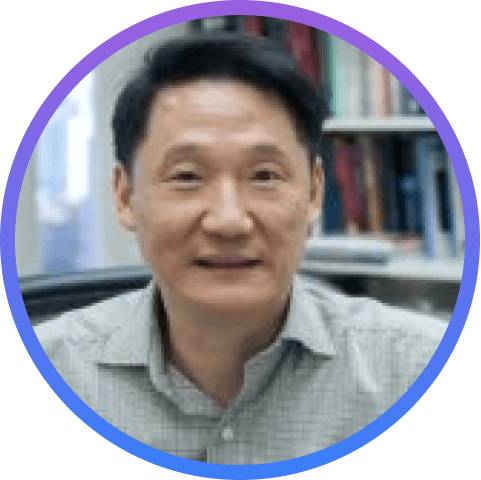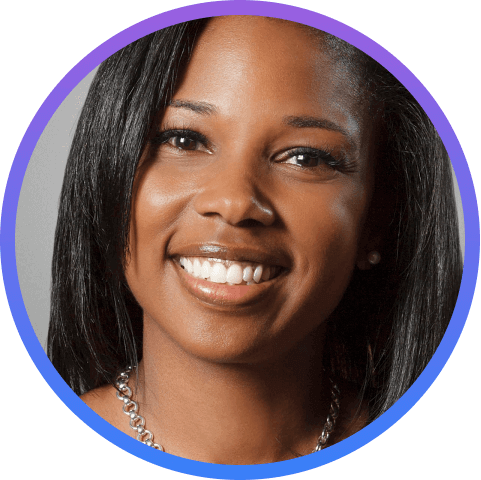The Ownership Of Creativity: Human Or Machine In The Age Of AI And Web3
Event Videos
Abstract
In an age where artificial intelligence is becoming more prevalent, the question of who owns creativity is more important than ever. Is it the human who creates the work, or the machine that produces it with enormous human generated data? This discussion will bring together some of the top minds in law, AI, industry, and venture capital to debate. It is a rare opportunity to have such a broad and diverse group of people in one place to discuss this important topic, which could have far-reaching implications for policy development and decision-making around AI-generated work. By better understanding the ownership of creativity, we can ensure that AI products are better aligned with essential rights.
Key Takeaways
AI can generate impressive fanciful works, both textual and visual. What we’ve seen so far is just the tip of the iceberg.
The quality we’re seeing nowadays is thanks to recent advancements in deep learning and neural networks, as well as in hardware and computing power.
AI will not fully replace the role of the human artist, but artists in the future may increasingly utilize AI in their work. Prompting an AI model effectively is an artistic/creative skill unto itself.
Generative AI may give artists significant advantage in commercial settings because they’ll be able to work faster and charge more competitive rates.
US Copyright and Patent Law only recognize human creators (authors and inventors), not machines.
You can copyright bad art, so long as it’s original and fixed in a tangible medium. And authored by a human.
There is a lot of grey area about how much a human "contributes" to the creation of AI-generated, which complicates copyright registration.
Copyright enforcement is going to be a bit of a “Wild West” for the foreseeable future because it’s so hard to draw the line between direct copying and derivative use in AI-generated content.
“Machine Unlearning” could be an interesting topic to the scientific community. Computer scientists are starting to research ways to remediate infringement risks from generative AI. However, one of the key challenges here is how to prove that the machine has truly forgotten a work.
Blockchain is more than just a ledger. The role of web3 will be facilitating novel ways to help creators share credit benefit from their creations.
Panelist

- Prof. Philip S. Yu
University of Illinois at Chicago
- Wexler Chair in Information and Technology, Distinguished Professor, Computer Science Dept. Univ. Of Illinois, Chicago.
Prof. Yu’s main research interests include big data, data mining (especially on graph/network mining), social network, privacy preserving data publishing, data stream, database systems, and Internet applications and technologies. He is a Fellow of the ACM and the IEEE. Before joining UIC, he was with IBM Thomas J. Watson Research Center, where he was manager of the Software Tools and Techniques department. Dr. Yu has published more than 970 papers in refereed journals and conferences with more than 157,000 citations and an H-index of 178. He holds or has applied for more than 300 US patents.

- Prof. Nicole Morris
Emory University School of Law
- Director of TI:GER and Professor of Practice; Director of the Innovation and Legal Tech Initiative (ILTI), Emory University School of Law.
Nicole N. Morris is a member of the faculty at Emory University School of Law. She is a professor of practice and director of the TI:GER program (Technological Innovation: Generating Economic Results), an innovative partnership between Emory and Georgia Institute of Technology (Georgia Tech) that brings together graduate students in law, business, science and engineering to work on ways to take innovative ideas from the lab to the marketplace. As a professor of practice, her areas of expertise include patent law, patent litigation, patent prosecution, IP licensing, and strategy.

- Leo Liang
Coinbase
- Head of Data Platform and Services, Coinbase.
Leo Liang is Head of the Data Platform and Services at Coinbase, leading engineers and blockchain researchers. He is an expert in large-scale compute / data infrastructure, machine learning, and blockchain technologies. Leo is an active leader in the entrepreneurial and leadership communities, and the chairman and a board member of Silicon Valley Leadership Community, a non-profit community with hundreds of leaders in tech. Leo is Cofounder of MatchA community, a premier tech angel community of engineering leaders in AI, Cloud, Data, and Blockchain. Prior to Coinbase, Leo started his career in Microsoft, early AWS Cloud and led engineering teams at Twitter and Cruise. He was CTO and advisor of Mixerbox, a YC W14 startup currently headquartered in Taiwan. Leo received a BE in Computer Science from The University of New South Wales (UNSW) and studied at UNSW’s PhD program in Databases.

- Michael A. Geller
DLA Piper
- Partner at DLA Piper.
Michael focuses his practice on domestic and international trademark and copyright law, as well as brand management and counselling, domain name disputes, social media enforcement and counselling, scam activities, and unfair competition law. His practice spans the globe, representing clients in clearance, counseling, prosecution, enforcement, and licensing matters and in assisting clients in protecting their intellectual property rights through litigation and other means, including in federal court, the TTAB, and through domain name dispute resolution procedures.

- Peter T. Donahue
 The Creativity Department, LLC
The Creativity Department, LLC- Artist, content creator, and owner of The Creativity Department, LLC
Peter has been active online as a graphic artist, cartoonist, freelance designer, and writer for 15 years. His experience as a digital creative has run the gamut, from hustling graphic design on fiverr, to successful Kickstarter campaigns; from publishing science fiction in online journals, to going viral explaining color theory (Peter has attracted over 300,000 followers as a color theory educator on TikTok.) As an artist and creative entrepreneur in the digital space, Peter engages in questions about the influence of AI on aesthetic and design trends. His science fiction speculates about the effects blockchain, neural networks, and other new technologies will have on the human experience in the near future.
Questions From The Audience
Can the products from a copyrighted algorhythm be copyrighted or otherwise protected?
As a working artist, I have extreme difficulty claiming authorship of the MidJourney images my prompts create. As far as I'm concerned, MidJourney is the author and I'm a midwife.
So if the AI (in whatever form) is looked at as a tool that the author/inventor uses, the designs that are chosen by the individual(s) would still be protectable? Especially for design patents, which does not demand to know what is the preexisting, and what is added.
Follow this quick scenario. According to WIPO, by 2020, at close to 800K cases, China accounted for 55% of the whole world's industrial designs. Add on to that the recent adoption of the Hague Industrial Designs scheme (which allows up to 100 designs of the same classification to be combined in a single application). So think ahead a year or two, the AI (or AIs) can be applied to each of those 800K cases before they are filed, to generate many hundreds of similar designs based on the same basic idea, and the inventor picks AND FINISHES the 100 most promising, and files them in a combined international deisgn application. How would any VVestern patent system (with the limited number of design patent examiners) handle that? It could potentially be millions of submarine design apps, as embodiments are still examined one at a time. On the TM side, America decided to require all foreign sourced TM applications be handled by licensed U.S. attorneys. Will that suffice in an AI powered supersurge in designs?
What about when the prompt includes "in the style of Warhol"
AI models have put all art in the public domain and removed rights. It is like opensource...except that even companies create propietary code and products. For some reason when it comes to the arts space an the way art is viewed and used, art is always deemed within the public domain. Not all code is opensource. Look at what is happening with Github copilot and the type of discussions going on. How have artists let themselves me so reduced and impovrished on the whole when engineers a a whole and industry continue to make money?
The ai is not taking inspiration from it. the human is the inspiration. inspiration is a human term.
Following up on my question: Does the creator(s) of the AI or ML algorithms also share in the rights of the final outcome? There are 3 creators in the room right? The computational engineer, their AI/ML machine and the designer/artist. 2 of those 3 are flesh and blood.
How much role might experts have to play in the future regarding copyright protection and determinations of originality and genre for AI art? For example, if Congress does rewrite the definition of authors and inventors, or even if they don't, might art experts receive more weight as expert witnesses, the way musicology experts have recently become more important to litigation?
You sue the person who made the model and generated the prompt and to companies associated with it. Thankfully there are new laws and regulations being created in Canada and in Europe in regards to AI responsibilities.
As the lawyers on the panel point out, the lawyers are expensive. The general impression is that copyright suits are not as "rich", compared to patents. But be that as it may, there clearly is strength in numbers. MOST vendors from outside the U.S. are not schooled in American style litigation. But I suspect it is much easier to settle a case with big box retailers if they are sued on hundreds, if not thousands of pieces of IP at one time. How about IP pools and use AI (for monitoring, sending out C&D letters, and managing the contingency lawyer network worldwide) - is that a ripe business/legal opportunity?
Health data, aka xrays are covered under the rights of the medical facility and organization. We citizens sign away our rights to our own medical data and then that data is used by hopitals with private technical orgs under an agreement. We as citizens don't have the right to request our data is not used for training for medical techinological cures or discoveries. It's because medicine and health is in another paremeter as a social good. Art is not in the same domain. What international rules and bodies is regulating art as a profession? In the US medical organization have rights that citizens do not have.
It is only a logical conflict because art is deemed as a domain of the masses and that is NOT the same for technological inventions.
Right, and at every turn artists are learning that they cannot make art a profession like others can in other domains. That is what is the crux of this argument.
Great panel and conversation! Lots of new legal issues and topics that could be covered, but if there is time, I'd love to get the panelists thoughts on whether AI-generative platforms are entitled to safe-harbor protection under the Section 512 of the DMCA for any AI-created works that are arguably infringing on existing IP rights? Is further regulatory/statutory clarification needed under the law for these emerging platforms?
Do you expect the discussion about whether the outout of can be copyrighted or patented will change if AI is Sentient? AI is not conscious or can precieve today. If that changes in the future then what?
"in the style of Warhol" does not mean "by Warhol"
Lol. I was exaggerating about artists being improvished, but look at the average salary of an artist and and engineer. People talk about how jobs become extinct. Artists don't contribute to their own extinction. Technologists do. Artists could never go and make technologists extinct. Once again, art was deemed a social good for humanity and the public thought sphere.
I commend each of the panelists for an excellent presentation. Ms. Molnar, good job, and yes, you should go to law school. (Saw you LinkedIn entry.)
All artists could not make a class action lawsuit against these AI and tech companies. Like mentioned before it would have to be a really limited segment of law and maybe from like large art owning institutions, foundation and insurance orgs who can make these types of arguments. Artists couldn't make these lawsuits themselves.
The class pool would also be difficult to vet given the potential that plaintiffs may have granted broad rights to the use of their works under the ToS/ToU of various Internet service provider platforms.